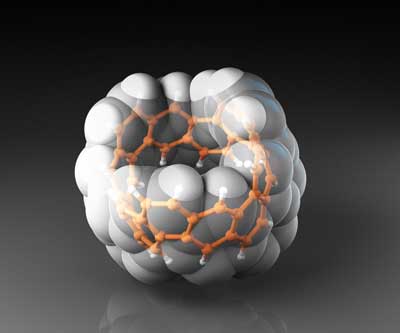Carbon Nanobelts: Unique Structures with Exciting Potential
What are Carbon Nanobelts?
Carbon nanobelts are a fascinating class of carbon nanomaterials characterized by their belt-like structure. Unlike carbon nanotubes, which have continuous cylindrical surfaces, carbon nanobelts consist of a series of fused benzene rings (which are aromatic rings consisting of six carbon atoms) that form a closed loop, resembling a belt or ribbon. These unique nanostructures exhibit intriguing properties and hold great potential for various applications in nanotechnology.

Synthesis of Carbon Nanobelts
The synthesis of carbon nanobelts has been a long-standing challenge in the scientific community, eluding chemists for more than 60 years due to the strained and curved geometry of these nanostructures. However, a groundbreaking achievement by a team at Nagoya University has finally realized the first successful organic synthesis of a carbon nanobelt. This milestone was accomplished by researchers at Nagoya University's JST-ERATO Itami Molecular Nanocarbon Project and the Institute of Transformative Bio-Molecules, using a bottom-up strategy involving carefully designed precursor molecules subjected to a series of chemical reactions. The resulting carbon nanobelt is expected to serve as a valuable template for constructing carbon nanotubes and pave the way for a new era in nanocarbon science.
The synthesis typically involves the following key steps:
- Design and synthesis of precursor molecules with appropriate curvature and functionality
- Cyclization reactions to form the fused benzene ring system
- Strain-inducing reactions to close the loop and create the belt-like structure
- Purification and characterization of the resulting carbon nanobelts
Properties of Carbon Nanobelts
Carbon nanobelts exhibit several unique properties that distinguish them from other carbon nanomaterials:
Structural Stability
Despite their highly strained geometry, carbon nanobelts demonstrate remarkable structural stability. The fused benzene ring system and the closed-loop structure contribute to their robustness and resistance to deformation.
Electronic Properties
Carbon nanobelts possess intriguing electronic properties due to their unique structure. The continuous π-electron conjugation along the belt-like framework results in delocalized electronic states and potential for charge transport. The electronic properties can be fine-tuned by modifying the size, width, and functionalization of the carbon nanobelts.
Optical Properties
The conjugated structure of carbon nanobelts also gives rise to interesting optical properties. They can exhibit strong absorption and emission in the UV-visible region, making them promising candidates for optoelectronic applications.
Potential Applications of Carbon Nanobelts
The unique properties of carbon nanobelts open up a wide range of potential applications in various fields:
Electronics
Carbon nanobelts have the potential to be used as building blocks for nanoscale electronic devices. Their delocalized electronic states and charge transport capabilities make them suitable for applications such as molecular wires, transistors, and sensors.
Energy Storage
The high surface area and stable structure of carbon nanobelts make them promising materials for energy storage applications. They can be explored as electrode materials in supercapacitors and batteries, offering high capacitance and fast charge/discharge rates.
Catalysis
Carbon nanobelts can also find applications in catalysis. Their curved surfaces and unique electronic properties may enable selective adsorption and activation of reactant molecules, leading to enhanced catalytic performance in various chemical reactions.
Challenges and Future Perspectives
While carbon nanobelts hold immense potential, several challenges need to be addressed for their widespread application. One of the main challenges is the scalable synthesis of carbon nanobelts with precise control over their size, width, and functionalization. Developing efficient and cost-effective production methods is crucial for their practical implementation.
Future research on carbon nanobelts will focus on understanding their fundamental properties, exploring new synthetic strategies, and investigating their performance in various applications. The integration of computational modeling and advanced characterization techniques will play a key role in unraveling the structure-property relationships of these fascinating nanostructures.
As the field of carbon nanobelts continues to evolve, it is expected to open up new avenues for nanoscale engineering and contribute to the development of next-generation technologies in electronics, energy, and catalysis.
Further Reading
Science, Synthesis of a carbon nanobelt
Precision Chemistry, Carbon Nanobelts: Brief History and Perspective
Nature Synthesis, Synthesis of a Möbius carbon nanobelt
